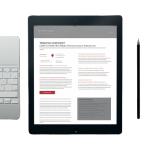
This blog is only for hoteliers who want to grow revenue and increase profits. Here are three reasons why adopting BI will actively help hoteliers grow revenue and profitability:
- Identifying the Most Profitable Guests: Leveraging data to pinpoint which guest segments drive higher revenue and deliver more substantial profit margins.
- Becoming More Future-Focused: Transitioning from a reactive, market-paced approach to proactive, forward-thinking strategies.
- Tracking Flowthrough to Increase Profit: Using real-time insights to optimize every aspect of operations, ensuring maximum financial performance.
For those who want to evolve beyond keeping pace with the market, a BI tool is necessary for strategic decision-making and sustainable growth.
Identifying Guest Segments
Data Quality and Collection
The foundation for any practical analysis is high-quality data. Identifying the most profitable guest segments without accurate, up-to-date data is impossible. Hotels are notoriously time-poor, and maintaining precise data in the PMS or other systems can be overwhelming. Often, hoteliers revert to relying on instincts because keeping data current seems too burdensome. Yet, by automating data collection processes and integrating systems, hotels can capture key variables such as the reason for travel, guest origin, booking channel, length of stay, booking window, and spending habits. The more detailed and accurate the data, the richer the analysis.
Segment Analysis
With robust data, the next step is to divide the guest base into distinct groups. Suppose the hotel has collected the reason for the visit, guest origin, booking channels, and spending patterns. In that case, these variables can be refined into micro-segments by cross-analyzing several variables, providing a granular view of guest behavior.
By establishing a strong data foundation and systematically analyzing guest segments, hotels can leverage business intelligence to move beyond instinct and drive targeted strategies that significantly enhance revenue and profitability.
Become More Future-Focused
Hoteliers who rely solely on reactive management miss the chance to stay ahead of market trends. Instead of waiting for challenges to manifest, a future-focused approach leverages business intelligence to anticipate changes and position the hotel for success.
Proactive Versus Reactive Management
Many hoteliers remain in a reactive mode simply because they are overwhelmed with day-to-day operational demands. They are so busy putting out fires and solving immediate issues that there is little time left for strategic planning. This approach addresses today’s problems today and tomorrow’s problems tomorrow. It is exhausting and also leaves little room for long-term growth.
Forecasting Trends
Business intelligence tools enable hoteliers to keep an up-to-date forecast to quickly determine seasonal demand fluctuations and broader market shifts. By analyzing historical data alongside real-time inputs, hotels can predict busy periods, adjust pricing strategies, and prepare for unexpected market changes.
Strategic Planning
With its forward-looking perspective, BI empowers hoteliers to allocate resources more efficiently. Whether optimizing staffing during peak seasons or launching targeted promotions during slower periods, strategic planning based on robust data ensures that every decision is aligned with future market conditions.
Track Flowthrough to Increase Profit
Flowthrough measures how well a hotel converts revenue into profit. Because hotel profits are generated on the margin, tracking flowthrough is critical. Once a hotel reaches its break-even point, every additional dollar of revenue should contribute significantly to profit through high flowthrough. The only way to ensure that marginal revenue effectively increases profit is to monitor and optimize flowthrough. With a thorough flowthrough analysis, a hotel operating at a GOP of 35% should be able to add a few percentage points to the GOP margin.
Understanding Marginal Profit for Each Product and Service
To maximize flowthrough, it’s essential to calculate the marginal profit for every product and service offered by the hotel. By understanding which offerings contribute the most to profit margins, hotels can prioritize selling and promoting those products that generate higher returns, ensuring every service is aligned with profitability targets.
Implementing New KPIs to Track Flowthrough Levels
Adopt key performance indicators that provide a clear picture of flowthrough:
- Net Revenue: Defined as gross revenue minus customer acquisition costs. This should be measured per room, per guest night, and as a percentage of total revenue.
- Gross Profit: Calculated as NetRevenue minus variable costs or COGS. Like NetRevenue, it should be tracked on a per-room-night and per-guest basis and as a percentage of revenue.
These KPIs offer insight into how effectively each revenue segment translates into profit.
Analyzing Flowthrough by Market Segment or Micro-Segment
A detailed analysis of flowthrough by market segment or even micro-segment can reveal which guest groups contribute most to profitability. This insight enables targeted strategies to further boost revenue or cut unnecessary costs:
- Increase Revenue: Identify segments where premium pricing or upselling opportunities can be enhanced.
- Decrease Customer Acquisition Costs: Refine marketing strategies to attract more high-margin guests at lower acquisition costs.
- Reduce Variable Costs: Evaluate operational efficiencies in specific segments to optimize cost structures.
By closely monitoring these aspects, hotels can fine-tune their operations, ensuring that every incremental revenue increase significantly enhances overall profitability.
Conclusion
Investing in hotel business intelligence isn’t just about collecting data—it’s about transforming that data into strategic insights that drive profit. By understanding who the most profitable guests are, shifting from reactive to future-focused management, and rigorously tracking flowthrough to boost marginal profits, hotels can unlock substantial revenue and profit growth. Ultimately, BI turns raw data into actionable strategies, enabling hoteliers to elevate performance, outpace competitors, and achieve sustainable growth.
Call to Action / Further Reading
Explore additional resources and case studies that explore the transformative power of BI in the hotel industry. Discover industry reports and expert analyses that provide further insights into effective BI strategies. We invite you to share your experiences and thoughts on integrating BI into hotel operations. Join the conversation and help shape the future of profitable, data-driven hospitality management.








